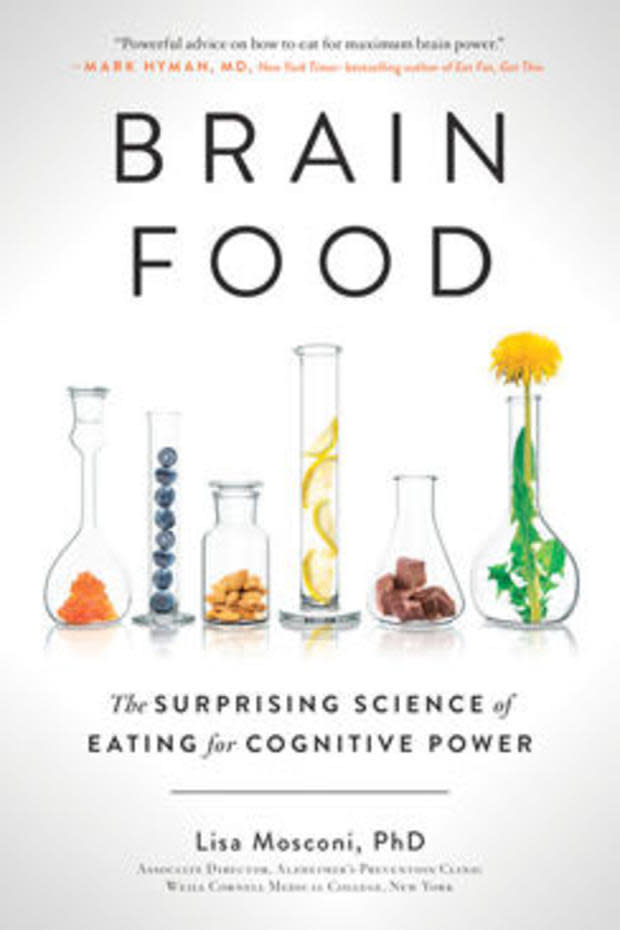Recipe: Basic Wild Atlantic Salmon
In the book "Brain Food: The Surprising Science of Eating for Cognitive Power" (Avery), Lisa Mosconi, the associate director of the Alzheimer's Prevention Clinic at Weill Cornell Medical College in New York, offers one of her family's favorite dishes that is also rich in components vital to brain health:

Avery
"The simplicity of the recipe will surprise you, as there is hardly any cooking involved. Both the delicious flavor and nutritional punch rely on using the freshest, highest-quality ingredients available, and the fact that they combine so well together.
"What is brain-healthy about this recipe? Everything. First, the fish. Deep-water fish, such as salmon, are rich in omega-3 polyunsaturated fatty acids, especially DHA, an essential for brain function. DHA makes up to 50 percent of the brain's phospholipids, which are crucial in keeping brain cell membranes flexible and functional as we age. Additionally, omega-3s have scientifically proven anti-inflammatory effects.
"Seeing is believing, so I am treating my family to the best possible source of DHA: wild Alaskan salmon. Since it's wild-caught, wild Alaskan salmon is "cleaner" and healthier than farm-raised fish, loaded with omega-3 PUFAs and containing 22 grams of lean protein that includes all your essential amino acids per just 7 grams of fat (most of which are essential fats)! All these bonuses in as little as 3 ounces of fish. The dressing here is important, too, as it really complements the dish."
Basic Wild Atlantic Salmon
Recipe by Lisa Mosconi, Ph.D.Serves 4
Ingredients:
1 pound wild Alaskan salmon fillet, cut in 4 pieces (I use frozen wild Alaskan salmon when I don't have access to fresh)¼ cup of filtered water2 tablespoons extra-virgin coconut oil2 tablespoons tamariJuice of ½ lemon
Preparation:
Step 1. Rinse the fish and arrange the fillets, skin side down, in an enamel or glass pie plate. Add the water. Set the pie plate in a steamer, cover, and steam until the fish is cooked through, about 8 to 10 minutes.
You can also use a skillet.
Heat a skillet over low heat. Place the fillets skin side down on the skillet and add water. Cover and let simmer for 4 to 5 minutes.
Step 2. In a small saucepan, heat the coconut oil, tamari, and lemon juice and stir for 1 minute.
Step 3. Transfer the fish to a plate and drizzle the tamari-lemon sauce over. Serve immediately. I usually serve this with a small cup of brown rice.
Reprinted from "Brain Food: The Surprising Science of Eating for Cognitive Power" by arrangement with Avery, an imprint of Penguin Publishing Group, a division of Penguin Random House LLC. Copyright © 2018, Lisa Mosconi, Ph.D.
For more info:
"Brain Food: The Surprising Science of Eating for Cognitive Power" by Lisa Mosconi, Ph.D. (Avery), in Hardcover, Trade Paperback, eBook and Audio formats, available via Amazon
Day 5, Part 1: Adam Schiff's opening statement
